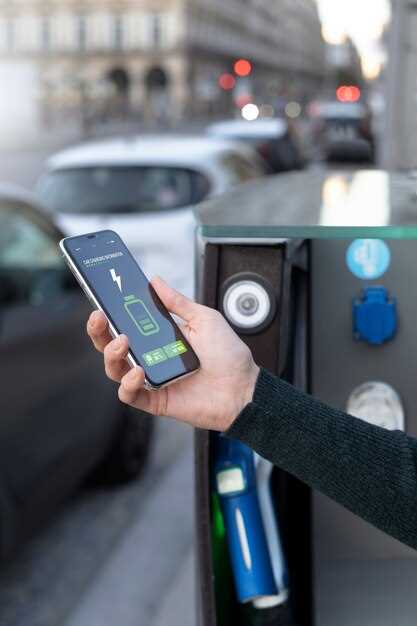
The shift towards electric vehicles (EVs) is transforming the transportation industry, with electric trucks emerging as a viable alternative to traditional diesel-powered options. As businesses increasingly adopt these environmentally friendly vehicles, understanding the nuances of charging electric trucks becomes crucial for optimizing operational efficiency and ensuring smooth logistics.
Charging infrastructure, charging times, and energy management play pivotal roles in the successful integration of electric trucks into fleets. By grasping the intricacies of these elements, fleet managers can make informed decisions that enhance the productivity of their operations while aligning with sustainability goals. In this article, we will explore key insights into charging electric trucks and offer practical tips to effectively manage the charging process.
From understanding different charging types and technologies to implementing smart charging solutions, we will delve into the strategies that can help businesses maximize the benefits of electric trucks. Whether you are new to electric fleet management or looking to refine your existing processes, this comprehensive guide will provide you with the necessary knowledge to navigate the complexities of charging electric trucks successfully.
Charging Electric Trucks: Key Insights and Practical Tips

As electric trucks become increasingly prevalent in logistics and transportation, understanding the nuances of their charging infrastructure is crucial for fleet operators. Effective charging management ensures reduced downtime, optimized operations, and cost efficiency.
1. Understand Your Charging Options: Electric trucks can utilize various charging methods, including Level 2 AC charging and DC fast charging. Level 2 chargers are suitable for overnight charging at depots, while DC fast chargers are essential for reducing downtime during transit. Evaluate your routes and operational needs to determine the ideal blend of charging technologies.
2. Optimize Charging Locations: Strategically place charging stations along frequently traveled routes and at depots. Consider current and future electric truck adoption rates in your area to optimize your investment in charging infrastructure. Use data analytics to identify peak charging times and manage scheduling efficiently.
3. Monitor Energy Consumption: Utilize telematics to track your fleet’s energy usage. Knowing how much energy each truck consumes can help you plan charging times and locations more effectively, ultimately lowering costs. Ensure your charging stations have smart connectivity to facilitate real-time monitoring.
4. Employ Smart Charging Solutions: Implement smart charging systems that can optimize charging schedules according to grid demand and electricity prices. This approach not only reduces expenses but also minimizes strain on the electrical grid during peak hours.
5. Plan for Infrastructure Upgrades: As electric trucks require substantial energy, assess existing electrical infrastructure for compatibility. Upgrading transformers and panels may be necessary to handle increased loads. Engage with utility companies to explore potential incentives and rebates for infrastructure improvements.
6. Prioritize Maintenance and Support: Regular maintenance of charging stations is vital to ensure reliability and efficiency. Partner with service providers that offer prompt support to resolve any issues and minimize downtime.
7. Train Your Drivers: Educate drivers on efficient charging practices and the operational benefits of electric trucks. Understanding the range, charging schedules, and best practices can enhance their performance and improve overall fleet management.
By implementing these insights and practical tips, fleet managers can ensure a smooth transition to electric trucks, effectively leveraging their potential to deliver sustainable and cost-effective logistics solutions.
Understanding Charging Infrastructure Options for Electric Trucks
As the adoption of electric trucks accelerates, understanding the available charging infrastructure options becomes essential for fleet operators and logistics companies. There are several types of charging solutions that cater to different operational needs and scenarios.
The primary charging infrastructure options include:
- Home Charging Stations:
Ideal for smaller fleets, home charging stations are a straightforward solution for overnight charging. These stations can be installed in depots or garages and provide a slow charging rate, typically around 7-22 kW, suitable for light-duty electric trucks.
- Public Charging Networks:
Public charging stations are increasingly found across urban and rural areas, enabling electric trucks to recharge on the go. These stations vary in charging speed, with options including:
- Level 2 chargers (up to 22 kW)
- Direct Current Fast Chargers (DCFC) – offering rates of 50 kW and above, significantly reducing charging times.
Utilizing a mix of residential and public charging can maximize operational flexibility for fleets servicing different routes.
- Fleet Charging Solutions:
Specifically designed for commercial fleets, these solutions often include multiple charging points strategically located within a depot or distribution center. Key features include:
- High-power charging units capable of delivering up to 350 kW, minimizing downtime.
- Load management systems to optimize electricity usage and accommodate peak demand.
- Telematics for monitoring charging sessions and vehicle performance.
- Wireless Charging:
An emerging technology, wireless charging (or inductive charging) offers a convenient solution where trucks can charge without plug-in connections. This approach is especially beneficial for urban environments where space and accessibility may be limited.
When choosing a charging infrastructure, consider the following factors:
- Charging Speed: Assess the urgency of your operations to determine the required charging speeds for different routes.
- Location: Evaluate the proximity of charging stations to regular routes and long-haul destinations.
- Cost: Factor in installation costs and potential electricity rates; seek options that provide the best return on investment.
- Infrastructure Compatibility: Ensure selected charging solutions are compatible with the electric truck models operated within your fleet.
- Future-Proofing: Consider scalability; as your fleet grows, the charging infrastructure should have the capacity to expand accordingly.
In summary, understanding the various charging infrastructure options is crucial for optimizing the performance and efficiency of electric truck fleets. Careful planning and consideration of operational needs will enable businesses to effectively transition to electric vehicles.
Strategies for Reducing Charging Time During Long Hauls
Reducing charging time for electric trucks during long hauls is essential for maximizing efficiency and minimizing downtime. Implementing various strategies can significantly enhance operational effectiveness while ensuring that electric trucks are ready for their next leg of the journey.
One of the most effective strategies is to utilize high-capacity fast chargers. These chargers can deliver a substantial amount of power quickly, allowing trucks to recharge significantly faster than standard charging stations. Identifying routes with access to high-capacity charging infrastructure ensures that drivers can take advantage of reduced charging times.
Another useful approach is to schedule charging during planned breaks or rest stops. By aligning charging sessions with driver rest periods, operators can optimize time management. This can be achieved through route planning that incorporates known charging station locations, allowing drivers to recharge efficiently while attending to mandatory rest breaks.
Incorporating battery swapping technology can also be a game-changer. Although still emerging, battery swapping enables trucks to exchange depleted batteries for fully charged ones within minutes, drastically reducing total downtime. This option is particularly useful for fleets operating on predictable routes where the swap stations can be strategically placed.
Utilizing regenerative braking during drives can help extend battery life and reduce charging frequency. This technique captures energy usually lost during braking and converts it back to stored energy in the battery, thus maximizing available power while on longer hauls.
Moreover, adopting intelligent route planning tools can further enhance charging strategies. These tools analyze real-time data related to traffic conditions, weather, and the availability of charging stations, allowing drivers to make informed decisions that minimize delays and optimize their journey.
Lastly, educating drivers about energy-efficient driving techniques can yield substantial benefits. Training drivers to maintain optimal speed, avoid heavy acceleration and deceleration, and utilize cruise control can help improve energy consumption, thus extending the time between charges and reducing overall charging needs during long trips.
Cost Management: Calculating the Total Cost of Charging Electric Trucks

Calculating the total cost of charging electric trucks is essential for effective cost management in logistics and transportation. This calculation includes several key components such as electricity rates, charging infrastructure costs, and operational expenses.
The primary factor influencing charging costs is the price of electricity. It is crucial to monitor local utility rates, which can vary by time of use. Many electricity providers offer lower rates during off-peak hours. By strategically scheduling charging during these times, operators can significantly reduce costs.
Another consideration is the type and location of charging stations. Installing on-site charging infrastructure can entail significant upfront costs. However, for fleets with high usage, having dedicated charging stations can lead to long-term savings. Evaluating the total cost of ownership (TCO) for both installation and ongoing maintenance is vital when assessing infrastructure choices.
In addition to energy and infrastructure costs, operational aspects must be taken into account. This includes labor costs for managing the charging process, potential savings from reduced fuel and maintenance expenses, and the impact of charging duration on overall fleet efficiency. Understanding how charging time affects vehicle availability can aid in optimizing fleet operations.
Moreover, it is beneficial to explore available incentives or subsidies for electric vehicle infrastructure. Many governments provide financial assistance for the installation of chargers, which can ease the initial burden and lower the effective overall costs.
Finally, tracking energy consumption patterns and costs can help fleets identify trends and adjust strategies accordingly. Regular analysis of charging expenses allows fleet managers to make informed decisions, improving cost management and enhancing the sustainability of electric truck operations.




